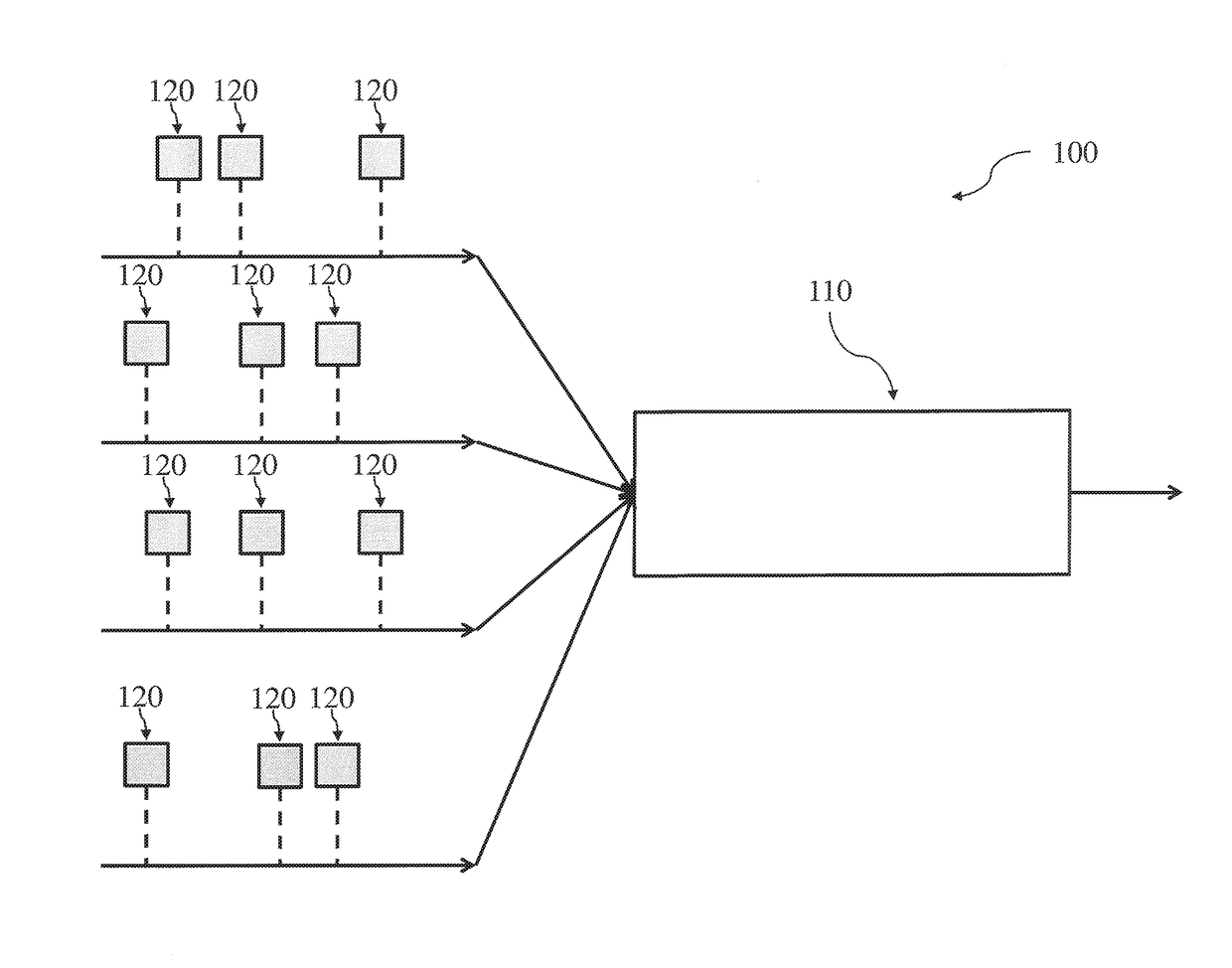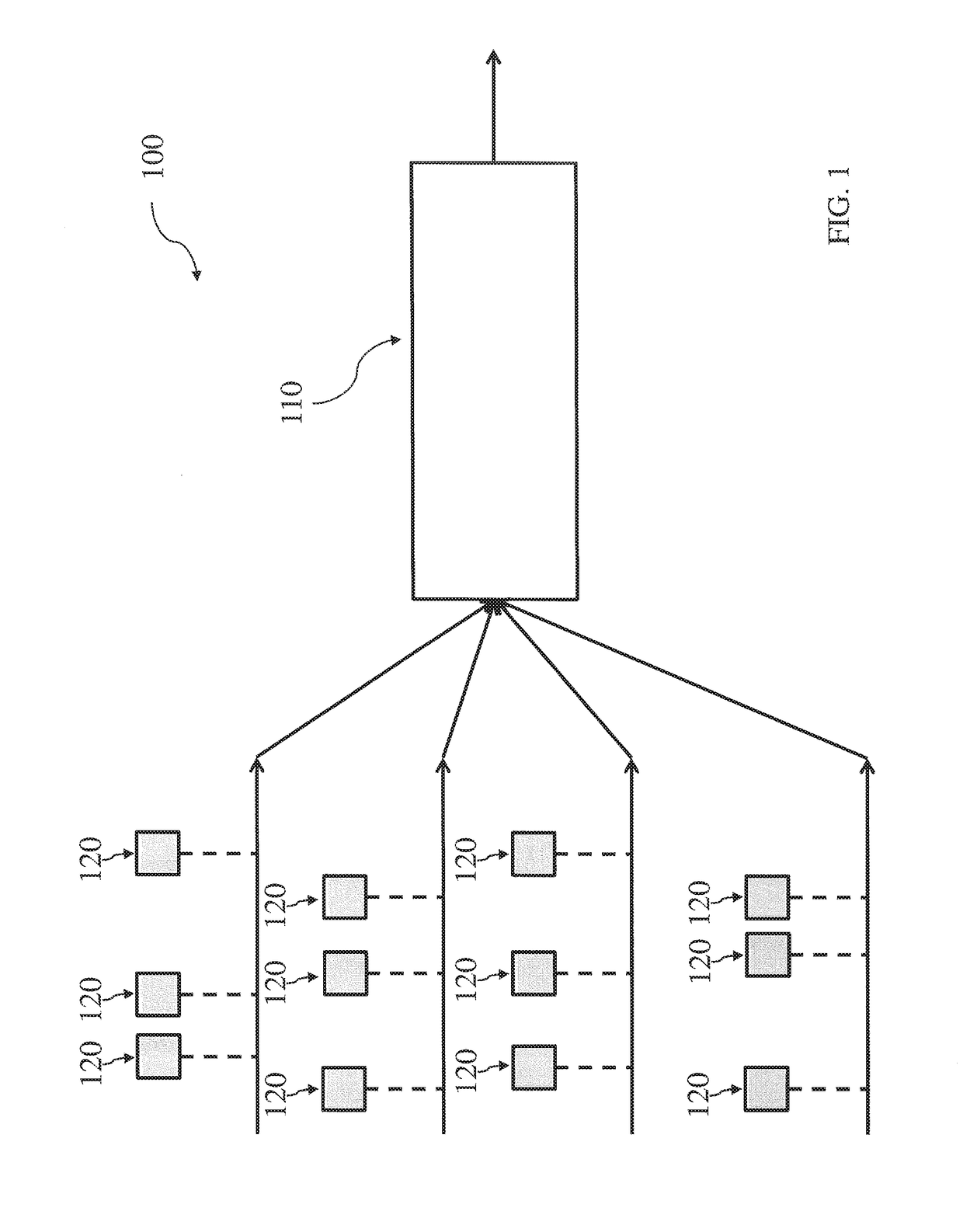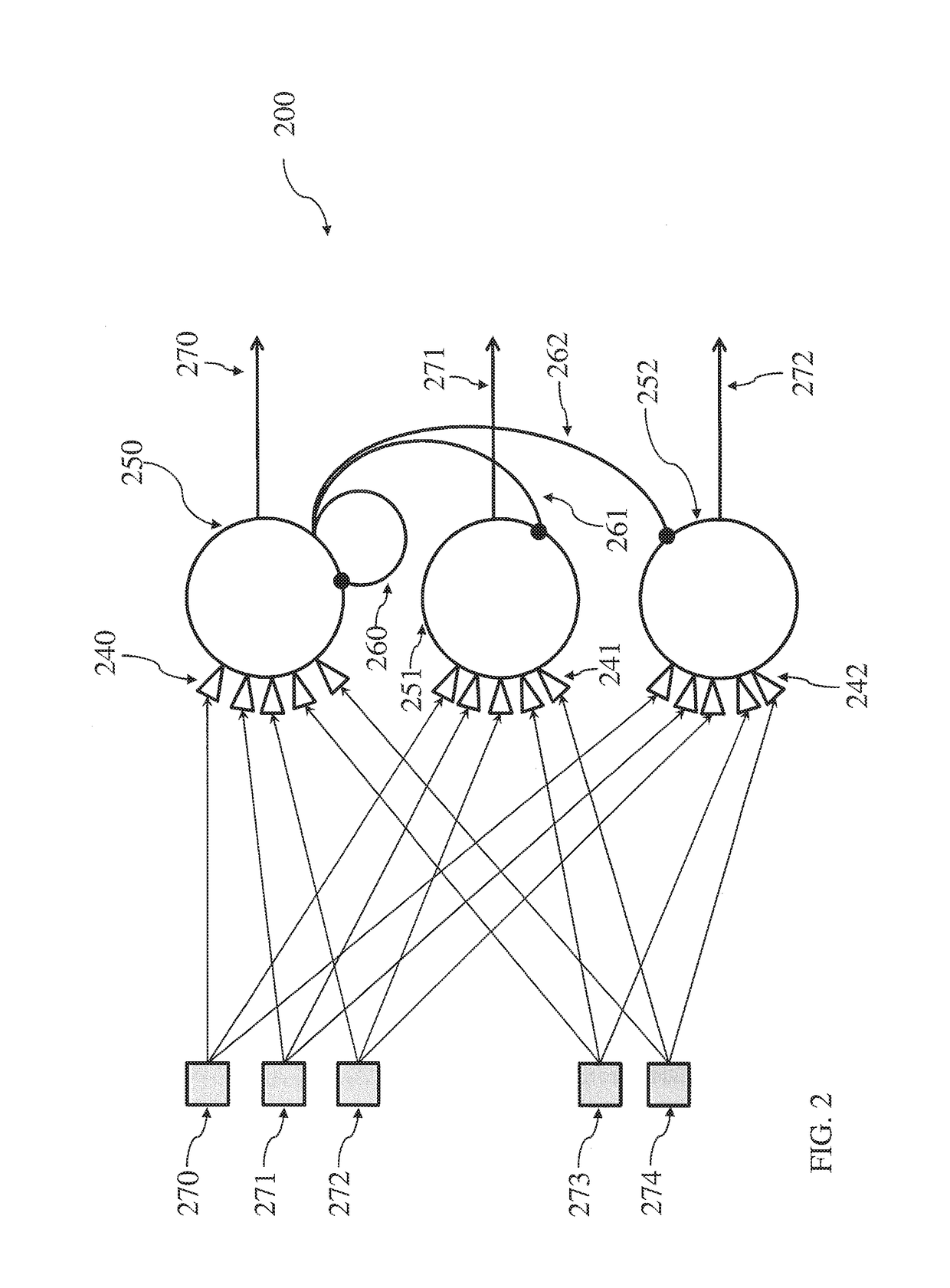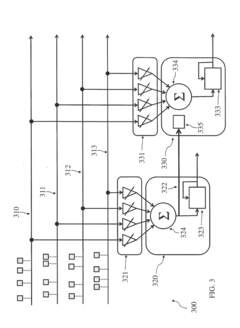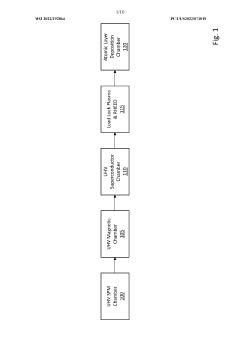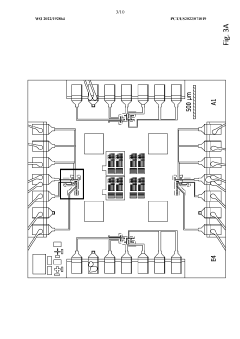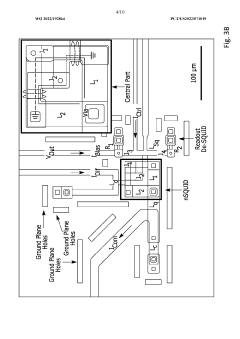Comparison of Neuromorphic Computing versus Quantum Materials
OCT 27, 202510 MIN READ
Generate Your Research Report Instantly with AI Agent
Patsnap Eureka helps you evaluate technical feasibility & market potential.
Neuromorphic and Quantum Computing Evolution and Objectives
Neuromorphic computing and quantum computing represent two revolutionary paradigms that have evolved along distinct technological trajectories, each with unique objectives and potential applications. Neuromorphic computing, inspired by the structure and function of the human brain, emerged in the late 1980s when Carver Mead introduced the concept of using electronic analog circuits to mimic neuro-biological architectures. This bio-inspired approach aims to replicate the brain's remarkable efficiency in pattern recognition and cognitive tasks while consuming minimal power.
The evolution of neuromorphic computing has progressed through several key phases, beginning with simple analog VLSI implementations and advancing toward sophisticated spiking neural networks (SNNs) and memristor-based architectures. The primary objective of this technology is to overcome the von Neumann bottleneck that plagues conventional computing systems by integrating memory and processing functions, thereby enabling massive parallelism and energy efficiency for AI applications.
Quantum computing, conversely, leverages quantum mechanical phenomena such as superposition and entanglement to perform computations. Its conceptual foundations were established in the early 1980s by physicists including Richard Feynman and David Deutsch, who recognized the potential for quantum systems to simulate quantum phenomena more efficiently than classical computers. The field has since evolved from theoretical constructs to increasingly practical implementations using various quantum materials and architectures.
The development of quantum materials for computing applications has followed a trajectory marked by significant breakthroughs in superconducting circuits, trapped ions, topological materials, and quantum dots. These materials exhibit quantum properties that can be harnessed for information processing at unprecedented scales, with the objective of achieving quantum advantage for specific computational problems that are intractable for classical computers.
Both technologies are converging toward a future where computational paradigms transcend traditional binary logic. Neuromorphic systems aim to achieve human-like cognitive capabilities with dramatically reduced power consumption, while quantum computing strives to solve previously intractable problems in fields ranging from cryptography to materials science and drug discovery.
The technological objectives for neuromorphic computing include developing more sophisticated neural architectures, improving learning algorithms, and scaling hardware implementations to approach the complexity of biological brains. For quantum computing, objectives center on increasing qubit coherence times, reducing error rates, and developing practical quantum algorithms that demonstrate clear advantages over classical approaches.
Understanding the evolutionary paths and objectives of these technologies provides crucial context for evaluating their respective potentials, limitations, and complementary roles in the future computing landscape. Their continued development promises to reshape computational capabilities across numerous industries and scientific disciplines.
The evolution of neuromorphic computing has progressed through several key phases, beginning with simple analog VLSI implementations and advancing toward sophisticated spiking neural networks (SNNs) and memristor-based architectures. The primary objective of this technology is to overcome the von Neumann bottleneck that plagues conventional computing systems by integrating memory and processing functions, thereby enabling massive parallelism and energy efficiency for AI applications.
Quantum computing, conversely, leverages quantum mechanical phenomena such as superposition and entanglement to perform computations. Its conceptual foundations were established in the early 1980s by physicists including Richard Feynman and David Deutsch, who recognized the potential for quantum systems to simulate quantum phenomena more efficiently than classical computers. The field has since evolved from theoretical constructs to increasingly practical implementations using various quantum materials and architectures.
The development of quantum materials for computing applications has followed a trajectory marked by significant breakthroughs in superconducting circuits, trapped ions, topological materials, and quantum dots. These materials exhibit quantum properties that can be harnessed for information processing at unprecedented scales, with the objective of achieving quantum advantage for specific computational problems that are intractable for classical computers.
Both technologies are converging toward a future where computational paradigms transcend traditional binary logic. Neuromorphic systems aim to achieve human-like cognitive capabilities with dramatically reduced power consumption, while quantum computing strives to solve previously intractable problems in fields ranging from cryptography to materials science and drug discovery.
The technological objectives for neuromorphic computing include developing more sophisticated neural architectures, improving learning algorithms, and scaling hardware implementations to approach the complexity of biological brains. For quantum computing, objectives center on increasing qubit coherence times, reducing error rates, and developing practical quantum algorithms that demonstrate clear advantages over classical approaches.
Understanding the evolutionary paths and objectives of these technologies provides crucial context for evaluating their respective potentials, limitations, and complementary roles in the future computing landscape. Their continued development promises to reshape computational capabilities across numerous industries and scientific disciplines.
Market Applications and Demand Analysis for Next-Generation Computing
The market for next-generation computing technologies is experiencing unprecedented growth, driven by the increasing limitations of traditional computing architectures in meeting the demands of data-intensive applications. Neuromorphic computing and quantum materials represent two distinct but promising approaches to address these challenges, each targeting specific market segments with unique value propositions.
Neuromorphic computing systems, which mimic the structure and function of biological neural networks, are gaining significant traction in applications requiring real-time processing of unstructured data. The market for these brain-inspired computing solutions is projected to grow substantially, particularly in sectors such as autonomous vehicles, robotics, and advanced surveillance systems where energy efficiency and real-time decision-making are critical. Industry analysts note that the neuromorphic hardware market is expanding at a compound annual growth rate exceeding 20%, reflecting strong commercial interest.
Quantum materials, meanwhile, are creating new possibilities for computing architectures that can solve previously intractable problems. The market demand for quantum computing solutions is particularly strong in pharmaceutical research, materials science, financial modeling, and cryptography. Organizations in these sectors are actively exploring quantum approaches to gain competitive advantages through superior computational capabilities for specific problem classes.
Market segmentation reveals distinct adoption patterns for these technologies. Enterprise-level organizations with substantial R&D budgets are currently the primary adopters of quantum material-based solutions, while neuromorphic computing is seeing broader adoption across both large enterprises and specialized mid-market companies focused on AI applications and edge computing.
Geographic distribution of demand shows concentration in North America, Western Europe, and East Asia, with emerging interest from research institutions in other regions. North America leads in commercial applications, while Asia demonstrates stronger focus on manufacturing integration of these technologies.
Customer requirements analysis indicates that while performance improvements remain the primary driver for both technologies, neuromorphic computing solutions are particularly valued for their energy efficiency and potential for edge deployment. Quantum material-based systems, conversely, are primarily evaluated based on their ability to solve specific complex problems that remain beyond the reach of conventional computing approaches.
Regulatory considerations are increasingly influencing market development, particularly regarding data security implications of quantum computing and the ethical dimensions of autonomous neuromorphic systems. These factors are shaping both technology development roadmaps and market adoption timelines across different regions and industry verticals.
Neuromorphic computing systems, which mimic the structure and function of biological neural networks, are gaining significant traction in applications requiring real-time processing of unstructured data. The market for these brain-inspired computing solutions is projected to grow substantially, particularly in sectors such as autonomous vehicles, robotics, and advanced surveillance systems where energy efficiency and real-time decision-making are critical. Industry analysts note that the neuromorphic hardware market is expanding at a compound annual growth rate exceeding 20%, reflecting strong commercial interest.
Quantum materials, meanwhile, are creating new possibilities for computing architectures that can solve previously intractable problems. The market demand for quantum computing solutions is particularly strong in pharmaceutical research, materials science, financial modeling, and cryptography. Organizations in these sectors are actively exploring quantum approaches to gain competitive advantages through superior computational capabilities for specific problem classes.
Market segmentation reveals distinct adoption patterns for these technologies. Enterprise-level organizations with substantial R&D budgets are currently the primary adopters of quantum material-based solutions, while neuromorphic computing is seeing broader adoption across both large enterprises and specialized mid-market companies focused on AI applications and edge computing.
Geographic distribution of demand shows concentration in North America, Western Europe, and East Asia, with emerging interest from research institutions in other regions. North America leads in commercial applications, while Asia demonstrates stronger focus on manufacturing integration of these technologies.
Customer requirements analysis indicates that while performance improvements remain the primary driver for both technologies, neuromorphic computing solutions are particularly valued for their energy efficiency and potential for edge deployment. Quantum material-based systems, conversely, are primarily evaluated based on their ability to solve specific complex problems that remain beyond the reach of conventional computing approaches.
Regulatory considerations are increasingly influencing market development, particularly regarding data security implications of quantum computing and the ethical dimensions of autonomous neuromorphic systems. These factors are shaping both technology development roadmaps and market adoption timelines across different regions and industry verticals.
Current Technological Landscape and Implementation Challenges
The neuromorphic computing landscape is currently experiencing significant growth, with major technology companies and research institutions investing heavily in this field. IBM's TrueNorth, Intel's Loihi, and BrainChip's Akida are among the leading neuromorphic chips, each implementing different approaches to brain-inspired computing. These systems utilize spiking neural networks (SNNs) that more closely mimic biological neural processes than traditional artificial neural networks, offering potential advantages in energy efficiency and real-time processing of sensory data.
In parallel, quantum materials research has been advancing rapidly, with materials such as topological insulators, quantum dots, and superconducting qubits showing promise for next-generation computing applications. Companies like IBM, Google, and D-Wave have made substantial progress in quantum computing hardware, while research institutions worldwide are exploring novel quantum materials with unique electronic and magnetic properties that could revolutionize computing paradigms.
Despite these advancements, both fields face significant implementation challenges. Neuromorphic systems struggle with scalability issues, as current fabrication techniques limit the density and connectivity of artificial neural networks compared to biological brains. Programming models for neuromorphic hardware remain immature, creating barriers for software developers attempting to leverage these architectures. Additionally, the lack of standardized benchmarks makes performance comparison difficult across different neuromorphic platforms.
Quantum materials face even more fundamental challenges, including extreme sensitivity to environmental conditions. Many quantum effects require ultra-low temperatures (near absolute zero) to manifest, necessitating expensive cooling infrastructure. Quantum decoherence—the loss of quantum states due to interaction with the environment—remains a critical obstacle to practical quantum computing implementations. Material fabrication consistency at quantum scales presents another significant hurdle, as atomic-level imperfections can dramatically alter material properties.
The integration of these technologies into existing computing ecosystems presents additional challenges. Current software stacks and algorithms are not optimized for either neuromorphic or quantum material-based systems, requiring substantial rethinking of computational approaches. Power requirements, though potentially lower for neuromorphic systems at the chip level, may be offset by cooling and support infrastructure needs, particularly for quantum materials.
From a geographical perspective, research leadership in these fields is concentrated in North America, Europe, and East Asia, with the United States, China, Japan, and the European Union making significant investments in both neuromorphic computing and quantum materials research. This distribution has implications for future technology development and commercialization pathways.
In parallel, quantum materials research has been advancing rapidly, with materials such as topological insulators, quantum dots, and superconducting qubits showing promise for next-generation computing applications. Companies like IBM, Google, and D-Wave have made substantial progress in quantum computing hardware, while research institutions worldwide are exploring novel quantum materials with unique electronic and magnetic properties that could revolutionize computing paradigms.
Despite these advancements, both fields face significant implementation challenges. Neuromorphic systems struggle with scalability issues, as current fabrication techniques limit the density and connectivity of artificial neural networks compared to biological brains. Programming models for neuromorphic hardware remain immature, creating barriers for software developers attempting to leverage these architectures. Additionally, the lack of standardized benchmarks makes performance comparison difficult across different neuromorphic platforms.
Quantum materials face even more fundamental challenges, including extreme sensitivity to environmental conditions. Many quantum effects require ultra-low temperatures (near absolute zero) to manifest, necessitating expensive cooling infrastructure. Quantum decoherence—the loss of quantum states due to interaction with the environment—remains a critical obstacle to practical quantum computing implementations. Material fabrication consistency at quantum scales presents another significant hurdle, as atomic-level imperfections can dramatically alter material properties.
The integration of these technologies into existing computing ecosystems presents additional challenges. Current software stacks and algorithms are not optimized for either neuromorphic or quantum material-based systems, requiring substantial rethinking of computational approaches. Power requirements, though potentially lower for neuromorphic systems at the chip level, may be offset by cooling and support infrastructure needs, particularly for quantum materials.
From a geographical perspective, research leadership in these fields is concentrated in North America, Europe, and East Asia, with the United States, China, Japan, and the European Union making significant investments in both neuromorphic computing and quantum materials research. This distribution has implications for future technology development and commercialization pathways.
Comparative Analysis of Current Architectural Approaches
01 Neuromorphic Computing Architectures
Neuromorphic computing architectures aim to mimic the structure and function of the human brain for more efficient information processing. These architectures typically incorporate neural networks, synaptic elements, and brain-inspired algorithms to enable parallel processing, low power consumption, and adaptive learning capabilities. By emulating biological neural systems, these computing systems can perform complex cognitive tasks with greater efficiency than traditional computing paradigms.- Neuromorphic computing architectures using quantum materials: Neuromorphic computing systems can be designed using quantum materials to mimic brain-like functionality. These architectures leverage quantum properties to create more efficient neural networks with enhanced computational capabilities. The integration of quantum materials in neuromorphic designs enables novel approaches to information processing that overcome limitations of traditional computing paradigms, offering potential breakthroughs in artificial intelligence and machine learning applications.
- Quantum materials for synaptic devices: Quantum materials can be engineered to function as artificial synapses in neuromorphic systems. These materials exhibit properties that allow them to mimic the plasticity and learning capabilities of biological synapses. By controlling quantum states within these materials, researchers can create devices with tunable synaptic weights and memory functions, enabling more efficient implementation of learning algorithms and neural network operations in hardware.
- Memristive quantum devices for neural computing: Memristive devices based on quantum materials offer promising solutions for neuromorphic computing applications. These devices can maintain memory states while processing information, similar to biological neurons. The quantum properties of these materials enable novel computational paradigms that combine memory and processing functions, reducing energy consumption and increasing computational density compared to conventional computing architectures.
- Quantum-enhanced learning algorithms for neuromorphic systems: Specialized learning algorithms that leverage quantum properties can significantly enhance the capabilities of neuromorphic computing systems. These algorithms exploit quantum phenomena to optimize neural network training and inference processes. By incorporating quantum principles into learning mechanisms, neuromorphic systems can achieve faster convergence, better generalization, and more efficient processing of complex patterns and datasets.
- Integration of neuromorphic and quantum computing paradigms: Hybrid approaches that combine neuromorphic and quantum computing offer novel computational capabilities. These integrated systems leverage the strengths of both paradigms: the parallel processing and learning capabilities of neuromorphic computing with the quantum advantages in specific computational tasks. Such hybrid architectures can address complex problems that are challenging for either approach alone, potentially enabling breakthroughs in fields requiring both pattern recognition and quantum simulation.
02 Quantum Materials for Computing Applications
Quantum materials exhibit unique properties at the quantum level that can be leveraged for advanced computing applications. These materials include superconductors, topological insulators, and materials with quantum spin states that can be manipulated to store and process information. The integration of quantum materials into computing systems enables novel functionalities such as quantum bits (qubits) for quantum computing and specialized components for neuromorphic systems.Expand Specific Solutions03 Memristive Devices and Synaptic Elements
Memristive devices and synaptic elements are fundamental components in neuromorphic computing systems that can mimic the behavior of biological synapses. These devices can change their resistance based on the history of applied voltage or current, enabling them to store and process information simultaneously. By incorporating quantum materials into memristive devices, researchers have developed more efficient and versatile components for neuromorphic computing with enhanced performance characteristics.Expand Specific Solutions04 Hybrid Quantum-Neuromorphic Systems
Hybrid systems that combine quantum computing principles with neuromorphic architectures represent an emerging frontier in computing technology. These systems leverage the advantages of both paradigms: the massive parallelism and pattern recognition capabilities of neuromorphic computing, and the unique quantum mechanical properties that enable quantum computing. The integration of quantum materials into neuromorphic frameworks allows for novel computational approaches that can address complex problems beyond the capabilities of either system alone.Expand Specific Solutions05 Energy-Efficient Computing with Quantum Materials
Energy efficiency is a critical consideration in the development of advanced computing systems. Quantum materials offer unique properties that can significantly reduce power consumption in neuromorphic computing applications. By utilizing quantum phenomena such as tunneling, superposition, and entanglement, these materials enable computing operations with minimal energy dissipation. The integration of quantum materials into neuromorphic architectures has led to the development of ultra-low-power computing systems suitable for edge devices and other applications where energy efficiency is paramount.Expand Specific Solutions
Leading Research Institutions and Corporate Stakeholders
Neuromorphic computing and quantum materials represent two distinct yet promising approaches in advanced computing, currently in early development stages. The market is experiencing rapid growth, estimated to reach $8-10 billion by 2028, driven by increasing demand for AI applications and energy-efficient computing solutions. IBM leads the neuromorphic computing landscape with its TrueNorth architecture, while Samsung, Intel, and Western Digital are making significant investments. In quantum materials, IBM's quantum computing division, PsiQuantum, and Rigetti are pioneering commercial applications. Academic institutions like MIT, Tsinghua University, and Peking University are contributing fundamental research across both domains. The technology remains in pre-commercial phases with most applications still experimental, though industry-academia partnerships are accelerating development toward practical implementations.
International Business Machines Corp.
Technical Solution: IBM has pioneered both neuromorphic and quantum computing technologies, offering a comprehensive comparison between these paradigms. In neuromorphic computing, IBM's TrueNorth chip features 1 million neurons and 256 million synapses on a single chip consuming only 70mW of power[1]. Their neuromorphic architecture mimics the brain's structure with spiking neural networks that process information in an event-driven manner, significantly reducing energy consumption compared to traditional computing. For quantum materials, IBM has developed superconducting qubit technology with their latest Eagle processor featuring 127 qubits[2]. IBM's quantum approach utilizes Josephson junctions made from superconducting materials that operate at near absolute zero temperatures to maintain quantum coherence. Their roadmap includes scaling to 1,000+ qubits with their Condor processor by 2023[3]. IBM's research demonstrates that while neuromorphic computing excels at pattern recognition and sensory processing tasks with extreme energy efficiency, quantum computing offers exponential speedups for specific problems like factorization and quantum simulation that are intractable for classical systems.
Strengths: IBM possesses comprehensive expertise in both fields with working hardware implementations and commercial offerings. Their neuromorphic systems demonstrate superior energy efficiency (70mW for 1 million neurons), while their quantum systems show leading qubit counts and coherence times. Weaknesses: Their neuromorphic systems still lag behind biological brains in terms of density and adaptability, while their quantum systems require extreme cooling infrastructure and face significant error correction challenges that limit practical applications.
Samsung Electronics Co., Ltd.
Technical Solution: Samsung has developed significant technologies in both neuromorphic and quantum materials computing domains. Their neuromorphic approach centers on memristor-based computing systems that utilize resistive RAM (RRAM) and phase-change memory (PCM) technologies to create artificial synapses and neurons[1]. Samsung's neuromorphic chips feature high-density crossbar arrays of these memory devices that can perform in-memory computing, eliminating the von Neumann bottleneck. Their research demonstrates that PCM-based neuromorphic systems can achieve energy efficiencies of less than 10 femtojoules per synaptic operation[2], approaching biological efficiency. In quantum materials, Samsung has focused on developing quantum dot technologies and exploring room-temperature quantum effects in 2D materials. Their approach involves integrating quantum materials with traditional semiconductor manufacturing processes to create hybrid quantum-classical systems. Samsung has demonstrated quantum dots with coherence times exceeding microseconds at temperatures above 1K[3], potentially enabling more practical quantum computing implementations that don't require extreme cooling. Their comparative research indicates neuromorphic systems excel at pattern recognition and sensory processing tasks with significantly lower power requirements, while quantum approaches offer theoretical advantages for specific computational problems.
Strengths: Samsung leverages its semiconductor manufacturing expertise to develop practical, scalable implementations of both technologies. Their memristor-based neuromorphic systems achieve near-biological energy efficiency while maintaining CMOS compatibility. Their quantum materials research focuses on more practical, higher-temperature implementations. Weaknesses: Samsung's neuromorphic systems still face challenges with device variability and reliability over time. Their quantum materials approach, while more practical, may not achieve the same computational advantages as fully coherent quantum systems operating at extremely low temperatures.
Breakthrough Patents and Research Publications
Neuromorphic architecture with multiple coupled neurons using internal state neuron information
PatentActiveUS20170372194A1
Innovation
- A neuromorphic architecture featuring interconnected neurons with internal state information links, allowing for the transmission of internal state information across layers to modify the operation of other neurons, enhancing the system's performance and capability in data processing, pattern recognition, and correlation detection.
Superconducting neuromorphic computing devices and circuits
PatentWO2022192864A1
Innovation
- The development of neuromorphic computing systems utilizing atomically thin, tunable superconducting memristors as synapses and ultra-sensitive superconducting quantum interference devices (SQUIDs) as neurons, which form neural units capable of performing universal logic gates and are scalable, energy-efficient, and compatible with cryogenic temperatures.
Energy Efficiency and Sustainability Considerations
Energy efficiency represents a critical differentiator between neuromorphic computing and quantum materials-based systems. Neuromorphic architectures inherently mimic the brain's energy-efficient information processing capabilities, consuming significantly less power than conventional von Neumann architectures. Current neuromorphic implementations demonstrate power consumption in the milliwatt range while performing complex cognitive tasks, representing orders of magnitude improvement over traditional computing systems performing equivalent functions. This efficiency stems from their event-driven processing nature, where computation occurs only when necessary, eliminating the constant power drain associated with clock-driven systems.
Quantum materials-based computing, while promising theoretical advantages in computational power, currently faces substantial energy efficiency challenges. Quantum systems typically require extreme cooling conditions, often operating at near absolute zero temperatures, which demands considerable energy overhead. The cooling infrastructure alone can consume kilowatts of power, offsetting the computational efficiency gains. However, recent developments in room-temperature quantum materials show potential for reducing these energy requirements, though commercial viability remains distant.
From a sustainability perspective, neuromorphic systems offer immediate advantages through reduced carbon footprints. Their lower power requirements translate directly to decreased energy consumption in data centers and edge devices. Additionally, neuromorphic hardware often utilizes conventional semiconductor manufacturing processes, benefiting from established recycling and waste management protocols. The extended operational lifespan of these systems, due to their inherent fault tolerance, further enhances their sustainability profile.
Quantum materials present a more complex sustainability equation. While their theoretical computational efficiency could eventually lead to energy savings, current manufacturing processes for quantum materials often involve rare earth elements and specialized fabrication techniques with significant environmental impacts. The extraction and processing of these materials raise concerns regarding resource depletion and ecological damage. However, ongoing research into alternative quantum materials, including carbon-based structures, may mitigate these sustainability challenges.
Looking forward, hybrid systems combining neuromorphic and quantum approaches may offer the optimal balance between energy efficiency and computational capability. Such systems could leverage neuromorphic architectures for energy-efficient pre-processing while utilizing quantum components for specific computationally intensive tasks, maximizing overall system sustainability while delivering enhanced performance for next-generation computing challenges.
Quantum materials-based computing, while promising theoretical advantages in computational power, currently faces substantial energy efficiency challenges. Quantum systems typically require extreme cooling conditions, often operating at near absolute zero temperatures, which demands considerable energy overhead. The cooling infrastructure alone can consume kilowatts of power, offsetting the computational efficiency gains. However, recent developments in room-temperature quantum materials show potential for reducing these energy requirements, though commercial viability remains distant.
From a sustainability perspective, neuromorphic systems offer immediate advantages through reduced carbon footprints. Their lower power requirements translate directly to decreased energy consumption in data centers and edge devices. Additionally, neuromorphic hardware often utilizes conventional semiconductor manufacturing processes, benefiting from established recycling and waste management protocols. The extended operational lifespan of these systems, due to their inherent fault tolerance, further enhances their sustainability profile.
Quantum materials present a more complex sustainability equation. While their theoretical computational efficiency could eventually lead to energy savings, current manufacturing processes for quantum materials often involve rare earth elements and specialized fabrication techniques with significant environmental impacts. The extraction and processing of these materials raise concerns regarding resource depletion and ecological damage. However, ongoing research into alternative quantum materials, including carbon-based structures, may mitigate these sustainability challenges.
Looking forward, hybrid systems combining neuromorphic and quantum approaches may offer the optimal balance between energy efficiency and computational capability. Such systems could leverage neuromorphic architectures for energy-efficient pre-processing while utilizing quantum components for specific computationally intensive tasks, maximizing overall system sustainability while delivering enhanced performance for next-generation computing challenges.
Standardization and Benchmarking Frameworks
The standardization and benchmarking of neuromorphic computing and quantum materials technologies represent critical challenges in comparing these emerging computational paradigms. Currently, the field lacks universally accepted metrics and testing frameworks, making objective performance comparisons difficult across different implementations and research groups.
For neuromorphic computing, several benchmarking initiatives have emerged, including the Neuromorphic Intelligence Benchmark (NIB) and the Spiking Neural Network Architecture (SNNA) benchmark suite. These frameworks attempt to standardize performance metrics such as energy efficiency, spike timing precision, learning capability, and computational density. However, adoption remains fragmented across the industry, with IBM, Intel, and BrainChip each utilizing proprietary benchmarking methodologies for their respective neuromorphic platforms.
Quantum materials benchmarking faces even greater standardization challenges due to the nascent nature of the field. The Quantum Materials for Computing Consortium (QMCC) has proposed standardized characterization protocols for quantum materials, focusing on coherence times, error rates, and material stability across different operating conditions. These efforts remain preliminary, with significant variations in testing methodologies across research institutions.
Cross-paradigm comparison frameworks represent the most underdeveloped area. The Computing Performance Metrics Initiative (CPMI) has attempted to create technology-agnostic benchmarks that can evaluate both neuromorphic and quantum material-based systems against traditional computing architectures. These include task-specific benchmarks for pattern recognition, optimization problems, and simulation capabilities that can be implemented across different computational paradigms.
Energy efficiency metrics have gained particular attention, with the Energy-Delay Product (EDP) and Operations-per-Joule measurements becoming increasingly standardized. These metrics allow for meaningful comparisons between the ultra-low power operations of neuromorphic systems and the potentially transformative but currently energy-intensive quantum material implementations.
International standards organizations, including IEEE and ISO, have established working groups focused on developing formal standards for next-generation computing paradigms. The IEEE P3109 working group specifically addresses neuromorphic computing standardization, while ISO/IEC JTC 1/SC 42 has expanded its artificial intelligence standardization efforts to include neuromorphic approaches. Quantum materials standardization remains primarily within materials science frameworks rather than computing standards.
The development of application-specific benchmark suites represents a promising direction, with domain-specific tests for machine learning, signal processing, and optimization problems that can be implemented across both neuromorphic and quantum material-based systems, enabling direct performance comparisons on practical computational tasks rather than abstract technical specifications.
For neuromorphic computing, several benchmarking initiatives have emerged, including the Neuromorphic Intelligence Benchmark (NIB) and the Spiking Neural Network Architecture (SNNA) benchmark suite. These frameworks attempt to standardize performance metrics such as energy efficiency, spike timing precision, learning capability, and computational density. However, adoption remains fragmented across the industry, with IBM, Intel, and BrainChip each utilizing proprietary benchmarking methodologies for their respective neuromorphic platforms.
Quantum materials benchmarking faces even greater standardization challenges due to the nascent nature of the field. The Quantum Materials for Computing Consortium (QMCC) has proposed standardized characterization protocols for quantum materials, focusing on coherence times, error rates, and material stability across different operating conditions. These efforts remain preliminary, with significant variations in testing methodologies across research institutions.
Cross-paradigm comparison frameworks represent the most underdeveloped area. The Computing Performance Metrics Initiative (CPMI) has attempted to create technology-agnostic benchmarks that can evaluate both neuromorphic and quantum material-based systems against traditional computing architectures. These include task-specific benchmarks for pattern recognition, optimization problems, and simulation capabilities that can be implemented across different computational paradigms.
Energy efficiency metrics have gained particular attention, with the Energy-Delay Product (EDP) and Operations-per-Joule measurements becoming increasingly standardized. These metrics allow for meaningful comparisons between the ultra-low power operations of neuromorphic systems and the potentially transformative but currently energy-intensive quantum material implementations.
International standards organizations, including IEEE and ISO, have established working groups focused on developing formal standards for next-generation computing paradigms. The IEEE P3109 working group specifically addresses neuromorphic computing standardization, while ISO/IEC JTC 1/SC 42 has expanded its artificial intelligence standardization efforts to include neuromorphic approaches. Quantum materials standardization remains primarily within materials science frameworks rather than computing standards.
The development of application-specific benchmark suites represents a promising direction, with domain-specific tests for machine learning, signal processing, and optimization problems that can be implemented across both neuromorphic and quantum material-based systems, enabling direct performance comparisons on practical computational tasks rather than abstract technical specifications.
Unlock deeper insights with Patsnap Eureka Quick Research — get a full tech report to explore trends and direct your research. Try now!
Generate Your Research Report Instantly with AI Agent
Supercharge your innovation with Patsnap Eureka AI Agent Platform!
